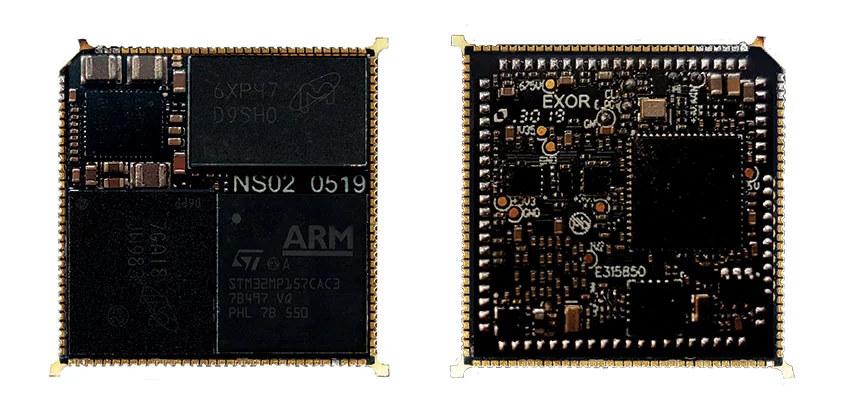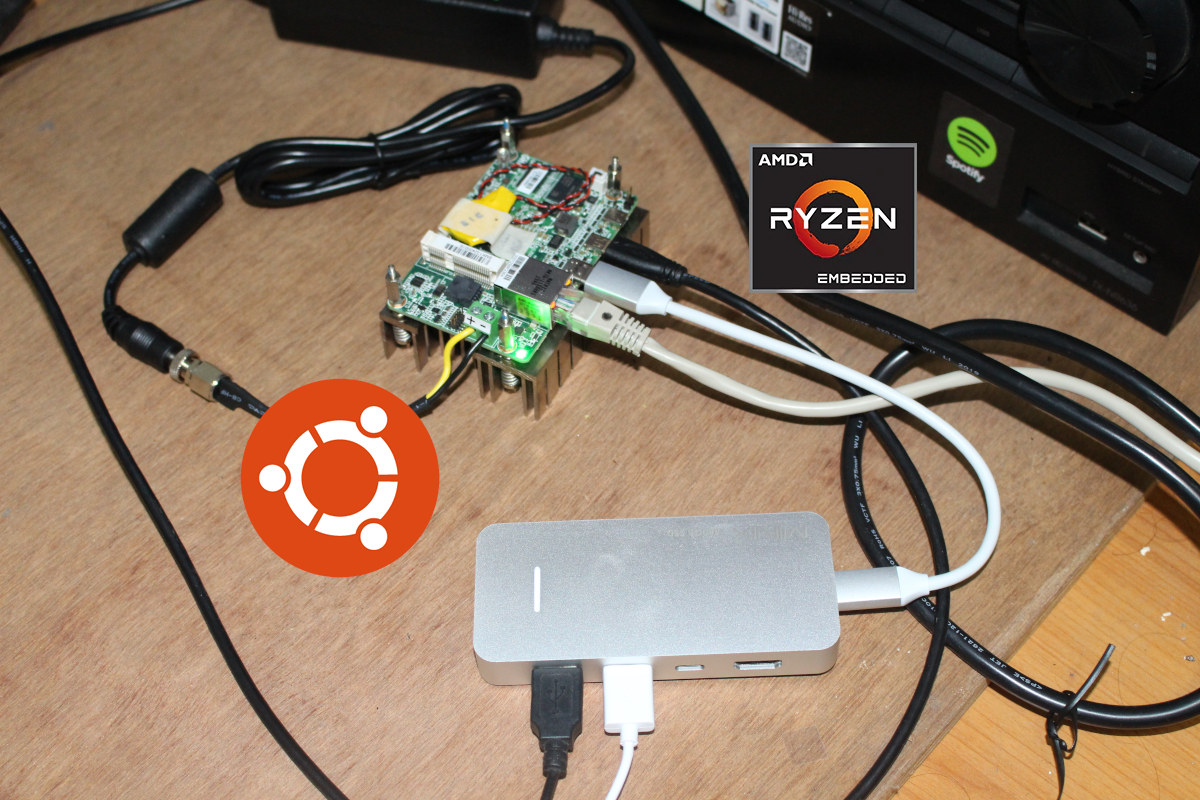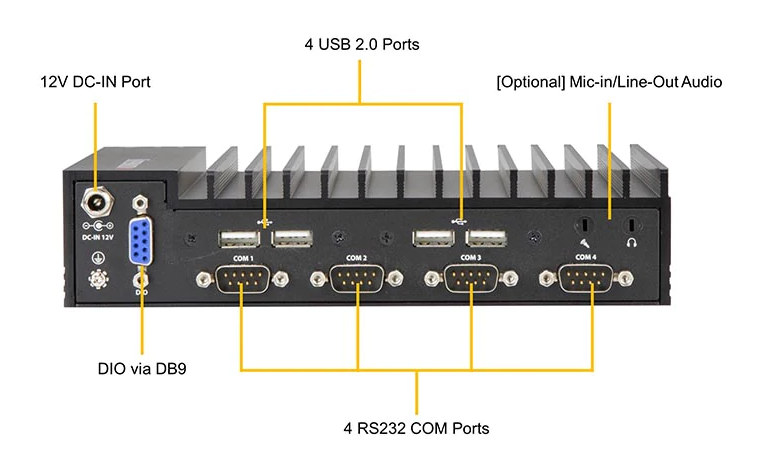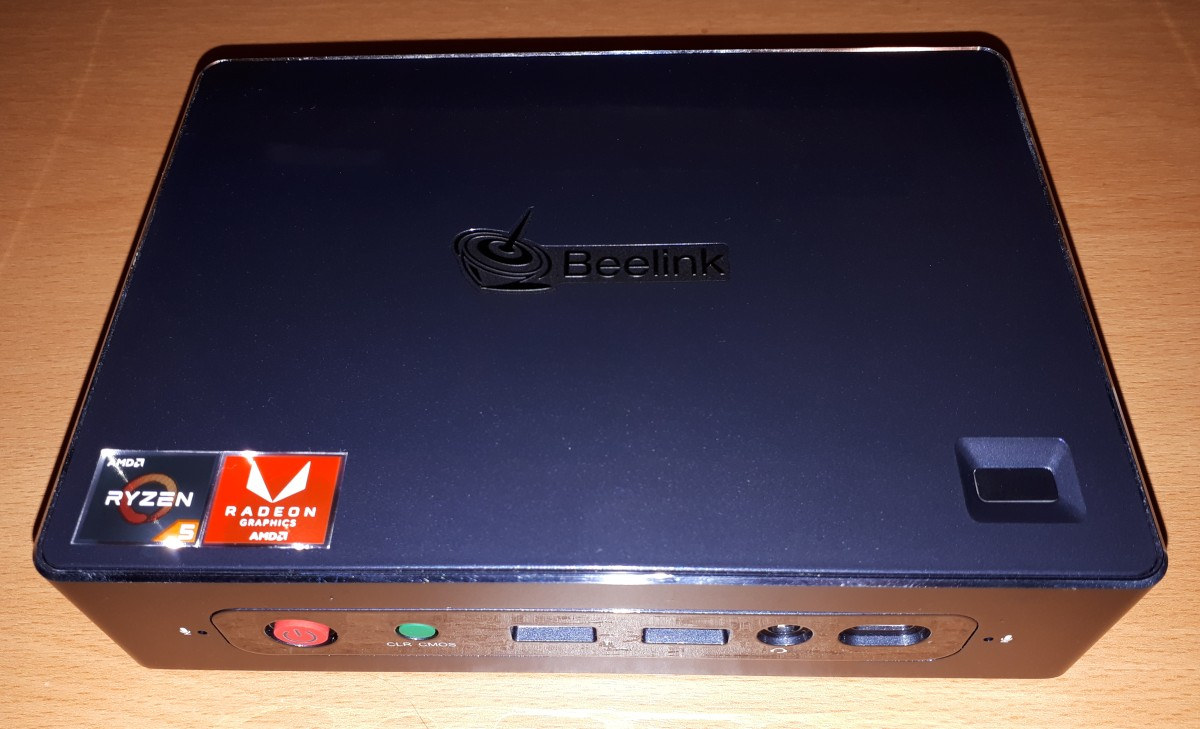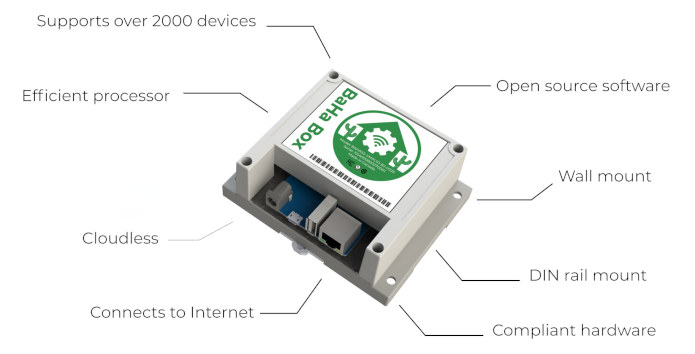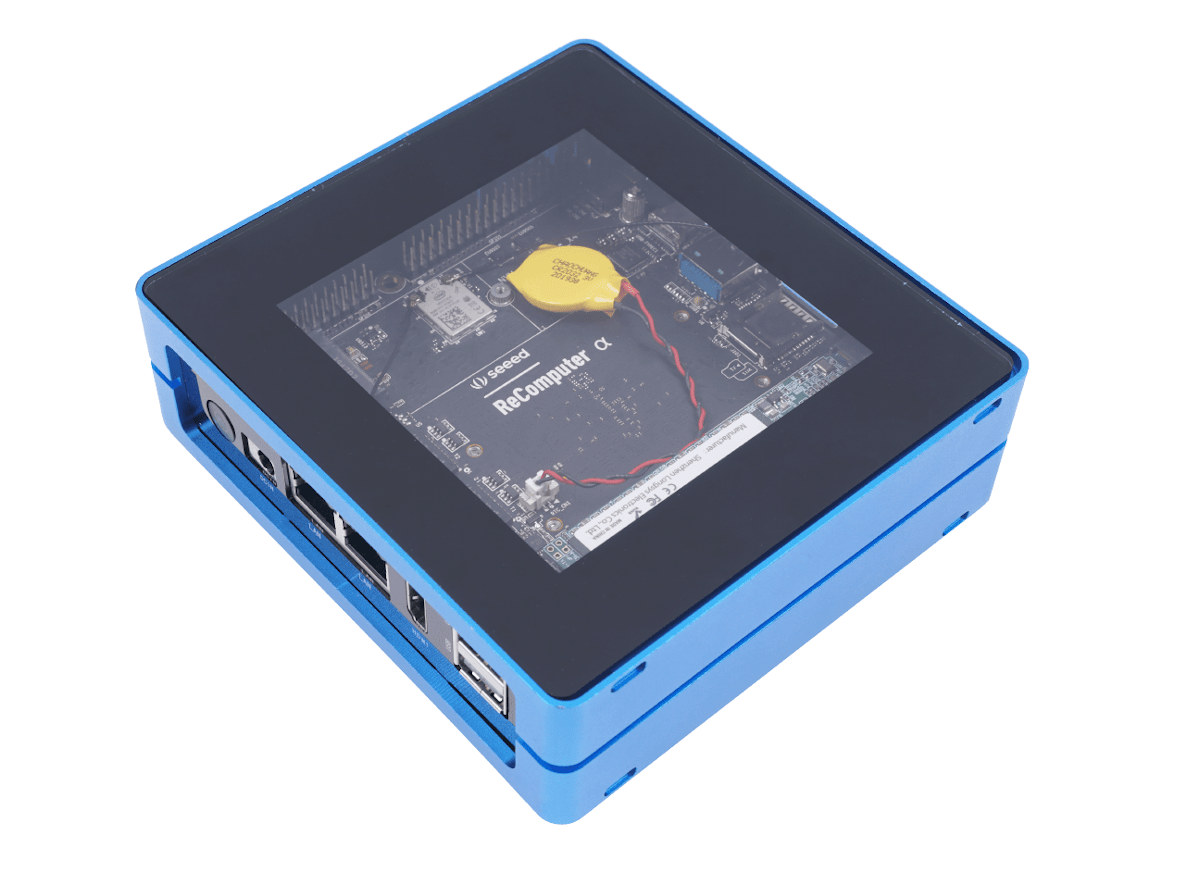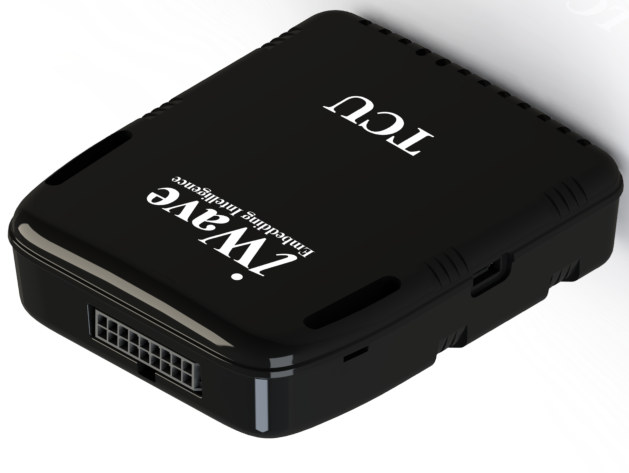Manga and comics fans, rejoice! After years of getting black & white eReaders, the first commercial color eReaders are coming to market starting with Onyx Boox Poke2 Color eReader sold for $299 (but sadly sold out at the time of writing). The eReader comes with a 6-inch, 1448 x 1072 E-Ink display that supports up to 4096 colors, and runs Android 9.0 on an octa-core processor coupled with 2GB RAM and 32GB storage. Onyx Boox Poke2 Color eReader specifications: SoC – Unnamed octa-core processor @ up to 2.0 GHz (possibly Snapdragon 625) System Memory – 2GB RAM Storage – 32GB eMMC flash Display – 6-inch 4096-color e-Ink display with 1448 x 1072 resolution (B&W: 300PPI, color: 100PPI) with finger touch support (e.g. stylus not supported), with 32-level adjustable color temperature (CTM) Connectivity – Dual-band 802.11 b/g/n WiFi 4 and Bluetooth 4.1 USB – Micro USB OTG port Misc – Power […]
Exor nanoSOM nS02 System-on-Module Features the 800MHz version of STM32MP1 Processor
Arrow Electronics and Exor Embedded have announced the nanoSOM nS02 system-on-module based on the 800MHz version of STMicro STM32MP1 microprocessor unveiled last February. The 25.4 x 25.4mm module is designed for IoT edge applications such as smart IoT controllers and gateways, cloud edge interfaces, and building automation. A supporting development kit can also be provided by Arrow Electronics. NanoSOM nS02 specifications: SoC -STMicro STM32MP157 dual-core Cortex-A7 processor @ 800MHz with 3D GPU System Memory – Up to 1GB DDR3L Storage – Up to 32GB eMMC flash, 4KB EEPROM USB & Ethernet Hub – Microchip LAN9512 controller 131x solder pads with Storage – 2x SD Video Output – 24-bit RGB LCD parallel or 2-lane MIPI DSI Camera Input – 8,10,12-bit video input Audio – 1x I2S channel Networking – 2x 10/100M Ethernet (one native, one via USB hub) USB – 2x USB 2.0 host, 1x USB OTG 4x SPI, 1x I2C, […]
AMD Ryzen Embedded SBC Review with Ubuntu 20.04
Last June, we reviewed DFI GHF51 Ryzen Embedded R1606G SBC with Windows 10 Enterprise LTSC. We had to send back the board to Taiwan, as the company wanted to double-check some of the issues we reported, and we got the board to review it with Ubuntu 20.04. So I downloaded Ubuntu 20.04.1 ISO flashed it to a USB flash drive, and could install it on the eMMC flash drive without issue. I selected to keep Windows 10, so I have a dual-boot system on a 32GB eMMC flash. Yes, I do like a challenge! 🙂 DFI GHF51 Ubuntu 20.04 System Info We can check some of the information from the system in the terminal:
|
1 2 3 4 5 6 7 8 9 10 11 12 13 14 15 16 17 18 19 20 21 22 23 24 25 26 27 28 29 30 31 32 33 34 35 36 37 38 39 40 41 42 43 44 45 46 47 48 49 50 51 52 53 54 55 56 57 58 59 60 61 62 63 64 65 66 67 68 69 70 71 72 73 74 75 76 77 78 79 80 81 82 83 84 85 86 87 88 89 90 91 92 93 94 95 96 97 98 99 100 101 102 103 104 105 106 107 108 109 110 111 112 113 114 115 116 117 118 119 120 121 122 123 124 125 126 127 128 129 130 131 132 133 134 135 136 137 138 139 140 141 142 143 144 145 146 147 148 149 150 151 152 153 154 155 156 157 158 159 160 161 162 163 164 165 166 167 168 169 170 171 172 173 174 175 176 177 178 179 180 181 182 183 184 185 186 187 188 189 190 191 192 193 194 195 196 197 198 199 200 201 202 203 204 205 |
jaufranc@CNX:~$ lsb_release -a No LSB modules are available. Distributor ID: Ubuntu Description: Ubuntu 20.04.1 LTS Release: 20.04 Codename: focal jaufranc@CNX:~$ uname -a Linux CNX 5.4.0-42-generic #46-Ubuntu SMP Fri Jul 10 00:24:02 UTC 2020 x86_64 x86_64 x86_64 GNU/Linux jaufranc@CNX:~$ inxi -Fc0 System: Host: CNX Kernel: 5.4.0-42-generic x86_64 bits: 64 Console: tty 2 Distro: Ubuntu 20.04.1 LTS (Focal Fossa) Machine: Type: Desktop Mobo: DFI model: GHF51 serial: <superuser/root required> UEFI: American Megatrends v: B206.10TA date: 06/10/2020 CPU: Topology: Dual Core model: AMD Ryzen Embedded R1606G with Radeon Vega Gfx bits: 64 type: MT MCP L2 cache: 1024 KiB Speed: 1397 MHz min/max: 1400/2600 MHz Core speeds (MHz): 1: 1397 2: 1396 3: 1402 4: 1406 Graphics: Device-1: Advanced Micro Devices [AMD/ATI] Picasso driver: amdgpu v: kernel Display: server: X.org 1.20.8 driver: amdgpu tty: 116x24 Message: Advanced graphics data unavailable in console. Try -G --display Audio: Device-1: Advanced Micro Devices [AMD/ATI] Raven/Raven2/Fenghuang HDMI/DP Audio driver: snd_hda_intel Device-2: Advanced Micro Devices [AMD] Raven/Raven2/FireFlight/Renoir Audio Processor driver: snd_rn_pci_acp3x Device-3: Advanced Micro Devices [AMD] Family 17h HD Audio driver: snd_hda_intel Sound Server: ALSA v: k5.4.0-42-generic Network: Device-1: Intel I211 Gigabit Network driver: igb IF: eno1 state: up speed: 1000 Mbps duplex: full mac: 00:01:29:9f:23:64 Drives: Local Storage: total: 29.12 GiB used: 22.08 GiB (75.8%) ID-1: /dev/mmcblk0 model: DG4032 size: 29.12 GiB Partition: ID-1: / size: 7.81 GiB used: 6.43 GiB (82.4%) fs: ext4 dev: /dev/mmcblk0p4 Sensors: System Temperatures: cpu: 58.5 C mobo: N/A gpu: amdgpu temp: 58 C Fan Speeds (RPM): N/A Info: Processes: 230 Uptime: 20h 49m Memory: 3.31 GiB used: 1.41 GiB (42.7%) Init: systemd runlevel: 5 Shell: bash inxi: 3.0.38 jaufranc@CNX:~$ df -h Filesystem Size Used Avail Use% Mounted on udev 1.7G 0 1.7G 0% /dev tmpfs 339M 1.7M 338M 1% /run /dev/mmcblk0p4 7.9G 6.5G 984M 88% / tmpfs 1.7G 73M 1.6G 5% /dev/shm tmpfs 5.0M 4.0K 5.0M 1% /run/lock tmpfs 1.7G 0 1.7G 0% /sys/fs/cgroup /dev/mmcblk0p1 96M 33M 64M 34% /boot/efi /dev/loop0 28M 28M 0 100% /snap/snapd/7264 /dev/loop1 55M 55M 0 100% /snap/core18/1705 /dev/loop2 241M 241M 0 100% /snap/gnome-3-34-1804/24 /dev/loop3 63M 63M 0 100% /snap/gtk-common-themes/1506 /dev/loop4 50M 50M 0 100% /snap/snap-store/433 tmpfs 339M 104K 339M 1% /run/user/1000 /dev/mmcblk0p3 21G 16G 5.3G 75% /media/jaufranc/Windows /dev/loop5 30M 30M 0 100% /snap/snapd/8542 /dev/loop6 55M 55M 0 100% /snap/core18/1880 /dev/loop7 50M 50M 0 100% /snap/snap-store/467 /dev/loop8 256M 256M 0 100% /snap/gnome-3-34-1804/36 jaufranc@CNX:~$ lsblk -a NAME MAJ:MIN RM SIZE RO TYPE MOUNTPOINT loop0 7:0 0 27.1M 1 loop /snap/snapd/7264 loop1 7:1 0 55M 1 loop /snap/core18/1705 loop2 7:2 0 240.8M 1 loop /snap/gnome-3-34-1804/24 loop3 7:3 0 62.1M 1 loop /snap/gtk-common-themes/1506 loop4 7:4 0 49.8M 1 loop /snap/snap-store/433 loop5 7:5 0 29.9M 1 loop /snap/snapd/8542 loop6 7:6 0 55M 1 loop /snap/core18/1880 loop7 7:7 0 49.8M 1 loop /snap/snap-store/467 loop8 7:8 0 255.6M 1 loop /snap/gnome-3-34-1804/36 sda 8:0 1 0 disk mmcblk0 179:0 0 29.1G 0 disk ├─mmcblk0p1 179:1 0 100M 0 part /boot/efi ├─mmcblk0p2 179:2 0 128M 0 part ├─mmcblk0p3 179:3 0 20.9G 0 part /media/jaufranc/Windows └─mmcblk0p4 179:4 0 8G 0 part / mmcblk0boot0 179:8 0 4M 1 disk mmcblk0boot1 179:16 0 4M 1 disk jaufranc@CNX:~$ sudo lshw -C cpu *-cpu description: CPU product: AMD Ryzen Embedded R1606G with Radeon Vega Gfx vendor: Advanced Micro Devices [AMD] physical id: 11 bus info: cpu@0 version: AMD Ryzen Embedded R1606G with Radeon Vega Gfx serial: Unknown slot: FP5 size: 2554MHz capacity: 3500MHz width: 64 bits clock: 100MHz capabilities: lm fpu fpu_exception wp vme de pse tsc msr pae mce cx8 apic sep mtrr pge mca cmov pat pse36 clflush mmx fxsr sse sse2 ht syscall nx mmxext fxsr_opt pdpe1gb rdtscp x86-64 constant_tsc rep_good nopl nonstop_tsc cpuid extd_apicid aperfmperf pni pclmulqdq monitor ssse3 fma cx16 sse4_1 sse4_2 movbe popcnt aes xsave avx f16c rdrand lahf_lm cmp_legacy svm extapic cr8_legacy abm sse4a misalignsse 3dnowprefetch osvw skinit wdt tce topoext perfctr_core perfctr_nb bpext perfctr_llc mwaitx cpb hw_pstate sme ssbd sev ibpb vmmcall fsgsbase bmi1 avx2 smep bmi2 rdseed adx smap clflushopt sha_ni xsaveopt xsavec xgetbv1 xsaves clzero irperf xsaveerptr arat npt lbrv svm_lock nrip_save tsc_scale vmcb_clean flushbyasid decodeassists pausefilter pfthreshold avic v_vmsave_vmload vgif overflow_recov succor smca cpufreq configuration: cores=2 enabledcores=2 threads=4 jaufranc@CNX:~$ sudo lshw -C memory *-firmware description: BIOS vendor: American Megatrends Inc. physical id: 0 version: B206.10TA date: 06/10/2020 size: 64KiB capacity: 8MiB capabilities: pci upgrade shadowing cdboot bootselect socketedrom edd int13floppy1200 int13floppy720 int13floppy2880 int5printscreen int14serial int17printer acpi usb biosbootspecification uefi *-memory description: System Memory physical id: c slot: System board or motherboard size: 4GiB *-bank:0 description: SODIMM DDR4 Synchronous Unbuffered (Unregistered) 2400 MHz (0.4 ns) product: M471A5244BB0-CRC vendor: Samsung physical id: 0 serial: 00000000 slot: DIMM 0 size: 4GiB width: 64 bits clock: 2400MHz (0.4ns) *-bank:1 description: [empty] product: Unknown vendor: Unknown physical id: 1 serial: Unknown slot: DIMM 0 *-cache:0 description: L1 cache physical id: e slot: L1 - Cache size: 192KiB capacity: 192KiB clock: 1GHz (1.0ns) capabilities: pipeline-burst internal write-back unified configuration: level=1 *-cache:1 description: L2 cache physical id: f slot: L2 - Cache size: 1MiB capacity: 1MiB clock: 1GHz (1.0ns) capabilities: pipeline-burst internal write-back unified configuration: level=2 *-cache:2 description: L3 cache physical id: 10 slot: L3 - Cache size: 4MiB capacity: 4MiB clock: 1GHz (1.0ns) capabilities: pipeline-burst internal write-back unified configuration: level=3 jaufranc@CNX:~$ free -mh total used free shared buff/cache available Mem: 3.3Gi 1.2Gi 201Mi 92Mi 1.9Gi 1.7Gi Swap: 376Mi 44Mi 332Mi jaufranc@CNX:~$ sudo lshw -C network *-network description: Ethernet interface product: I211 Gigabit Network Connection vendor: Intel Corporation physical id: 0 bus info: pci@0000:01:00.0 logical name: eno1 version: 03 serial: 00:01:29:9f:23:64 size: 1Gbit/s capacity: 1Gbit/s width: 32 bits clock: 33MHz capabilities: pm msi msix pciexpress bus_master cap_list ethernet physical tp 10bt 10bt-fd 100bt 100bt-fd 1000bt-fd autonegotiation configuration: autonegotiation=on broadcast=yes driver=igb driverversion=5.6.0-k duplex=full firmware=0. 6-1 ip=192.168.1.9 latency=0 link=yes multicast=yes port=twisted pair speed=1Gbit/s resources: irq:34 memory:fcf00000-fcf1ffff ioport:f000(size=32) memory:fcf20000-fcf23fff jaufranc@CNX:~$ lsusb Bus 002 Device 003: ID 2537:1081 VIA Labs, Inc. USB3.0 Hub Bus 002 Device 002: ID 2109:0813 VIA Labs, Inc. USB3.0 Hub Bus 002 Device 001: ID 1d6b:0003 Linux Foundation 3.0 root hub Bus 001 Device 006: ID 1a2c:0002 China Resource Semico Co., Ltd Bus 001 Device 004: ID 04f2:1718 Chicony Electronics Co., Ltd Bus 001 Device 005: ID 2109:0100 VIA Labs, Inc. Bus 001 Device 003: ID 14cd:8601 Super Top 4-Port hub Bus 001 Device 002: ID 2109:2813 VIA Labs, Inc. USB2.0 Hub Bus 001 Device 001: ID 1d6b:0002 Linux Foundation 2.0 root hub jaufranc@CNX:~$ lspci 00:00.0 Host bridge: Advanced Micro Devices, Inc. [AMD] Raven/Raven2 Root Complex 00:01.0 Host bridge: Advanced Micro Devices, Inc. [AMD] Family 17h (Models 00h-1fh) PCIe Dummy Host Bridge 00:01.3 PCI bridge: Advanced Micro Devices, Inc. [AMD] Zeppelin Switch Upstream (PCIE SW.US) 00:08.0 Host bridge: Advanced Micro Devices, Inc. [AMD] Family 17h (Models 00h-1fh) PCIe Dummy Host Bridge 00:08.1 PCI bridge: Advanced Micro Devices, Inc. [AMD] Raven/Raven2 Internal PCIe GPP Bridge 0 to Bus A 00:08.2 PCI bridge: Advanced Micro Devices, Inc. [AMD] Raven/Raven2 Internal PCIe GPP Bridge 0 to Bus B 00:14.0 SMBus: Advanced Micro Devices, Inc. [AMD] FCH SMBus Controller (rev 61) 00:14.3 ISA bridge: Advanced Micro Devices, Inc. [AMD] FCH LPC Bridge (rev 51) 00:18.0 Host bridge: Advanced Micro Devices, Inc. [AMD] Raven/Raven2 Device 24: Function 0 00:18.1 Host bridge: Advanced Micro Devices, Inc. [AMD] Raven/Raven2 Device 24: Function 1 00:18.2 Host bridge: Advanced Micro Devices, Inc. [AMD] Raven/Raven2 Device 24: Function 2 00:18.3 Host bridge: Advanced Micro Devices, Inc. [AMD] Raven/Raven2 Device 24: Function 3 00:18.4 Host bridge: Advanced Micro Devices, Inc. [AMD] Raven/Raven2 Device 24: Function 4 00:18.5 Host bridge: Advanced Micro Devices, Inc. [AMD] Raven/Raven2 Device 24: Function 5 00:18.6 Host bridge: Advanced Micro Devices, Inc. [AMD] Raven/Raven2 Device 24: Function 6 00:18.7 Host bridge: Advanced Micro Devices, Inc. [AMD] Raven/Raven2 Device 24: Function 7 01:00.0 Ethernet controller: Intel Corporation I211 Gigabit Network Connection (rev 03) 02:00.0 VGA compatible controller: Advanced Micro Devices, Inc. [AMD/ATI] Picasso (rev 91) 02:00.1 Audio device: Advanced Micro Devices, Inc. [AMD/ATI] Raven/Raven2/Fenghuang HDMI/DP Audio Controller 02:00.2 Encryption controller: Advanced Micro Devices, Inc. [AMD] Family 17h (Models 10h-1fh) Platform Security Processor 02:00.3 USB controller: Advanced Micro Devices, Inc. [AMD] Raven2 USB 3.1 02:00.5 Multimedia controller: Advanced Micro Devices, Inc. [AMD] Raven/Raven2/FireFlight/Renoir Audio Processor 02:00.6 Audio device: Advanced Micro Devices, Inc. [AMD] Family 17h (Models 10h-1fh) HD Audio Controller 02:00.7 Non-VGA unclassified device: Advanced Micro Devices, Inc. [AMD] Raven/Raven2/Renoir Non-Sensor Fusion Hub KMDF driver 03:00.0 SATA controller: Advanced Micro Devices, Inc. [AMD] FCH SATA Controller [AHCI mode] (rev 61) |
So I have a 7.9GB partition to play with Ubuntu 20.04.1, but I could do all tests without issues, although I had to remove Phoronix benchmark program and data after completing the benchmark. Features Testing […]
Supermicro Launches SuperServer SYS-E100-9W-H Fanless Whiskey Lake Embedded Mini PC
US-based Supermicro is known for its server products, but the company’s latest SuperServer SYS-E100-9W-H fanless embedded mini PC targets other applications, specifically industrial automation, retail kiosks, smart medical devices, and digital signage. The mini PC is equipped with an Intel Core i7-8665UE Whiskey Lake Embedded processor coupled with up to 64GB DDR4 memory, and offers plenty of connectivity options with dual Gigabit Ethernet, eight USB ports, four serial ports, and dual video output with HDMI and DisplayPort.SuperServer SYS-E100-9W-H specification: SoC – Intel Core i7-8665UE quad-core/octa-thread Whiskey Lake Embedded processor @ 1.7 GHz (Base) / 4.4 GHz (Turbo) with Intel UHD Graphics 620; 15W TDP System Memory – 2x DIMM slots for up to 64GB DDR4-2400MHz (non-ECC) Storage – Support for M.2 NVMe/SATA SSD Video Output – HDMI and DisplayPort Audio – ALC 888S HD Audio codec, optional Mic-in/Line-Out Networking – Dual Gigabit Ethernet via Intel I210IT and Intel I219LM USB […]
Beelink GT-R Review – An AMD Ryzen 5 Mini PC Tested with Windows 10 and Ubuntu 20.04
Whilst Windows mini PCs have traditionally used Intel processors similar small form factor (SFF) devices using AMD based processors have recently been announced and Beelink is amongst the first manufacturers to deliver one with their newly released GT-R mini PC. Available as a barebones device and in various configurations Beelink sent a fully configured model for review. Hardware overview The Beelink GT-R is a slightly larger mini PC physically consisting of a 168 mm x 120 mm x 39 mm (6.61 x 4.72 x 1.54 inches) rectangular metal case with a plastic top. It is an actively cooled mini PC that uses a (previous generation) Zen+ microarchitecture 12 nm Ryzen 5 3550H mobile processor which is a quad-core 8-thread 2.1 GHz processor boosting to 3.7 GHz with Radeon Vega 8 Graphics. The front panel has a power button, two 3.0 USB ports, a headphone jack, and a Type-C USB port […]
BaHa Box Smart Automation Hub Features Allwinner H2+ or NXP i.MX 6ULL Processor (Crowdfunding)
Most devices on the market are designed with a single brand of processor, but for their BaHa Box smart automation hub, xPoint Products decided to offer either Allwinner H2+ or NXP i.MX 6ULL versions. Why is that? Easy: Allwinner H2+ processor provides a cheaper solution for the residential market, while NXP i.MX 6ULL wide temperature range makes it more suitable for commercial applications. Both versions of BaHa Box smart hub run Linux on 256MB RAM, and offers Ethernet, WiFi, and Bluetooth connectivity, with options for Zigbee and Z-Wave. The hub supports over 2,000 devices and can work either connected to the cloud, or “offline” without internet. BaHa Box specifications: SoC Residential-grade version – Allwinner H2+ quad-core Cortex-A7 processor Commerical-grade version – NXP i.MX 6ULL Cortex-A7 processor System Memory – 256MB DDR3 Storage MicroSD card slot Residential-grade version – 256KB flash Industrial-grade version – 256MB flash Connectivity 10/100M Ethernet, WiFi, and […]
Odyssey Blue J4105 Windows & Linux Mini PC Comes with a 128GB SSD, an Arduino Compatible MCU
We recently reviewed ODYSSEY-X86J4105 SBC by Seeed Studio with Windows 10, and installed it to the Re_Computer case to convert it into a mini PC. Besides being a standard Intel Gemini Lake SBC, the board also comes with an Arduino MCU and header, as well as a 40-pin I/O header so it can be an all-in-one Arduino development platform, or be used for advanced robotics projects. Both the board and case had to be purchased separately, and Windows 10 was pre-installed on the internal eMMC flash. But now, Seeed Studio has started to offer Odyssey Blue J4105 mini PC with ODYSSEY-X86J4105 SBC pre-installed into Re_Computer case and fitted with a 128GB SSD for increased storage capacity and better performance. Odyssey Blue J4105 mini PC specifications: SoC – Intel Celeron J4105 quad-core processor @ 1.5/2.5 GHz (Turbo) with 12EU Intel UHD Graphics 600 @ 250-750 MHz; 10W TDP System Memory – […]
iWave Telematics Control Unit Supports GPS, 4G LTE, WiFi, and Bluetooth
We’ve often written about iWave Systems’ single board computers, development kits, and systems-on-module, but the company has also been offering automotive products such as a Linux based OBD-II Dongle. And they’ve just introduced a new one called Telematics Control Unit (TCU) based on an Arm Cortex-A7 processor and offering GPS, 4G LTE Cat 4/1/M1, WiFi 5, and Bluetooth 5.0 connectivity for vehicle fleet management and insurance companies that want to know how drivers behave… iWave Telematics Control Unit (TCU iW-G26) specifications: Processor – Arm Cortex-A7 based CPU @ 792MHz (likely NXP i.MX 7ULP) System Memory – 256MB DDR3L SDRAM Storage – 4GB eMMC Flash Connectivity 4G LTE Cat 4, Cat 1, Cat M1 (eMTC) 802.11b/g/n Wi-Fi 4 or 802.11b/g/n/ac Wi-Fi 5 (Hotspot & Station mode) Bluetooth 5.0 GNSS – GPS/A-GPS receiver with antenna Sensors – 3-axis accelerometer, 3-axis gyroscope, 3-axis magnetometer OBD Features & Protocols 12V Power Input from TCU […]



